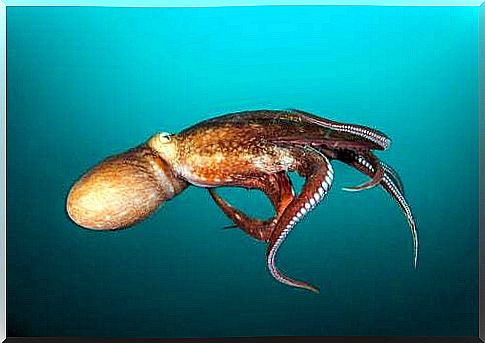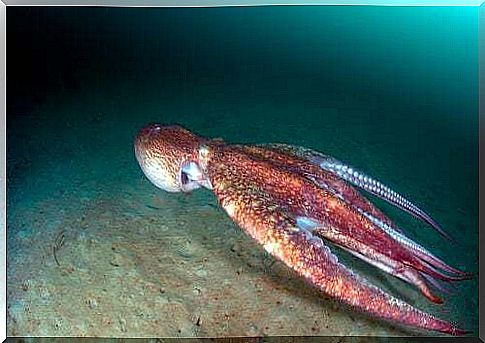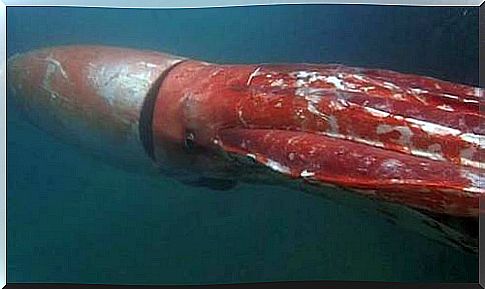Giant Squid Sightings Around The World

The giant squid is a mollusk-type invertebrate belonging to the class of cephalopods. The Danish biologist Japetus Steenstrup discovered these creatures in 1857 and baptized them as Architeuthis dux , the prince of squid. More than 160 years later, information about them remains scarce and uncertain. In this article we talk about the sightings of giant squid around the world.
The little information known about these giant molluscs comes from dead specimens found along the coast, mostly decomposed. Others come from those caught by fishermen or from fragments found in the stomach of sperm whales, the only ones able to eat them.
The existence of 12 species of giant squid has been excluded from genetic studies and was assured that there is only one species: the ‘ Architeuthis dux . Let’s see together what have been the sightings of giant squid in the world.
Characteristics of the giant squid
Its total length reaches 14 meters and its weight is between 230 and 250 kg. It inhabits the deepest abysses of the oceans, at depths between 250 and 1,500 meters from the surface. These are places where the pressure is very high and which are not reached by sunlight.
The giant squid has a very large head, while its body is spherical with two lateral fins. Around the mouth it has a total of 10 tentacles: eight with suckers and two contractile. The contractile tentacles, longer than the others, are prehensile and are used to capture prey and carry it into the shorter tentacles. Once restrained, the prey is quartered by a powerful jaw in the shape of a curved beak.
They are solitary animals, which feed on fish, cephalopods and crustaceans. Its only predators are the sperm whale and its congeners.

The eyes of the giant squid measure between 25 and 30 centimeters in diameter, and are considered to be the largest in the animal kingdom. This large eye with its highly sensitive retina serves to detect its largest predator, the sperm whale, which produces bioluminescence around the plankton. In this way, the squid detects this luminescence on its very sensitive retina and is able to escape the attack.
The giant squid also defends itself by throwing an ink jet, which inhibits the olfactory organs and hinders the predator’s vision.
Why do they emerge on the surface?
Possible reasons why giant squid emerge to the surface can be:
- They were badly injured by a predator or other squid.
- Because they fell into the fishermen’s nets.
- Because of the explosions caused by gas and oil. These disorient or injure the giant squid which, as they rise to the surface, suffocate.
Giant squid sightings around the world
Of the giant squid, usually only corpses are found, dying specimens floating to the surface or remains inside the stomach of sperm whales or dolphins. These animals have hardly been sighted alive.
Despite this, a live giant squid was spotted in Toyama Bay, Japan in December 2015. This was the most important sighting in recent times, as it took place in shallow water. The reasons for its presence in such unusual conditions are still unknown.
The specimen sighted was about four meters long. Although it was not as immense as other remains found in the past, as it had a standard size within the species, its sighting was nonetheless surprising.

In addition to Japan, giant squid have been sighted in Asturias, Newfoundland, Namibia, New Zealand and South Africa.
In the case of Asturias, Spain, this is also the European geographical area where most of the remains of giant squid have been found. The abundance of these immense animals in the area can be traced back to the great depth of the underwater caves of Llanes, Aviles and Llastres, which goes from 200 to 3,000 meters and which the squid exploit to protect themselves from predators and to search for food.









